Hi Ricardo
I have experimented a bit today with DIY wire-wound source resistors.
They can be made EXTREMELY small...
...and I believe, with no more inductance than a 'regular component lead'.
Dielectric...air, Teflon or glass; with epoxy potting.
Thank you again Ricardo, for thinking 'outside the lines'...
...some seem to reject 'different' notions with little thought or consideration...
...Perhaps a case of 'lead-boots' on 'metal-film toes' !
My last 2 phono-pre's are 'stuffed full' of metal-films...
...It does not hurt my pride, to think, some could be bettered by WW's here however !
Your comment on load-resistor ( or pot ? ) also most relavant, I think.
I don't imagine those rejecting off hand, even the concept !, of WW's, would be slow to reject also :-
The NEW ! 'sputtered metal-film phono-cartridge'...
...pack of 100, available NOW ! for 1 Euro.
( Ha ha ha...Even here... " It all about MONEY, aint a damn thing FUNNY; gotta have a car in this land of milk & honey...)
On the loading again Ricardo...
...I think you use Benz ( ace ? I think ) cart.
What kind of loading do you favour for it.
Same as makers say ? or your own preferance ? Ohms ?
I think as you point out...
...the source resistors 'stand out' as the targets for any DIY resistor builds...
...this is fortunate; as although 'loving a challenge'...
...making DIY wire-wounds much larger than this, is not one I particularly want.
A 'custom load-resistor' however, does seem worth considering.
Out of a large collection of 'regular made' 5% WW's...
...a few stand out at 1% tol...
...both obviously 'machine-made'.
Out of the whole collection 2 resistors stand-out as very 'different'.
Both are VERY 'high-tolerance' types...
...1.2k @ 0.25% & 1k @ 0.025% ( yes ! I got the dot right ! ).
Both are quite obviously 'hand made'.
Both are also totaly 'non-magnetic' ( does it matter ??? ).
A DIY wire-wound is a lot more challenging for the load than the source R's.
( RS Components do a 'limited' range of 0.1% WW's...EXPENSIVE ( sort of ))
Anyway...
...I have LOADS of the 1.2k's...
...not so many of the 1k's ( I may get more ).
What loading you use again Ricardo ?
Mine will probably be for a Hi-MC ( makers say 47k, people say 1k ( ish )).
Cart is wire coil...
...resistors should be as well !
Simples !!!
Cheers.
Si.
Don't think the sputtered metal-film phono-cart is gonna catch-on, do you ?
I have experimented a bit today with DIY wire-wound source resistors.
They can be made EXTREMELY small...
...and I believe, with no more inductance than a 'regular component lead'.
Dielectric...air, Teflon or glass; with epoxy potting.
Thank you again Ricardo, for thinking 'outside the lines'...
...some seem to reject 'different' notions with little thought or consideration...
...Perhaps a case of 'lead-boots' on 'metal-film toes' !
My last 2 phono-pre's are 'stuffed full' of metal-films...
...It does not hurt my pride, to think, some could be bettered by WW's here however !
Your comment on load-resistor ( or pot ? ) also most relavant, I think.
I don't imagine those rejecting off hand, even the concept !, of WW's, would be slow to reject also :-
The NEW ! 'sputtered metal-film phono-cartridge'...
...pack of 100, available NOW ! for 1 Euro.
( Ha ha ha...Even here... " It all about MONEY, aint a damn thing FUNNY; gotta have a car in this land of milk & honey...)
On the loading again Ricardo...
...I think you use Benz ( ace ? I think ) cart.
What kind of loading do you favour for it.
Same as makers say ? or your own preferance ? Ohms ?
I think as you point out...
...the source resistors 'stand out' as the targets for any DIY resistor builds...
...this is fortunate; as although 'loving a challenge'...
...making DIY wire-wounds much larger than this, is not one I particularly want.
A 'custom load-resistor' however, does seem worth considering.
Out of a large collection of 'regular made' 5% WW's...
...a few stand out at 1% tol...
...both obviously 'machine-made'.
Out of the whole collection 2 resistors stand-out as very 'different'.
Both are VERY 'high-tolerance' types...
...1.2k @ 0.25% & 1k @ 0.025% ( yes ! I got the dot right ! ).
Both are quite obviously 'hand made'.
Both are also totaly 'non-magnetic' ( does it matter ??? ).
A DIY wire-wound is a lot more challenging for the load than the source R's.
( RS Components do a 'limited' range of 0.1% WW's...EXPENSIVE ( sort of ))
Anyway...
...I have LOADS of the 1.2k's...
...not so many of the 1k's ( I may get more ).
What loading you use again Ricardo ?
Mine will probably be for a Hi-MC ( makers say 47k, people say 1k ( ish )).
Cart is wire coil...
...resistors should be as well !
Simples !!!
Cheers.
Si.
Don't think the sputtered metal-film phono-cart is gonna catch-on, do you ?
Si
I use 2k1 ohms for loading my 0.8mV ACE
What cart do you use ?
You know that a high output cart like the DL160 is "sold" to be used with 47k but I use mine with 1k... tighter bass... less fizzy trebble... quite a cart indeed for the price.
WW are prefered by most, but size matters and not allof us can actually build them like you do... congrats
I use 2k1 ohms for loading my 0.8mV ACE
What cart do you use ?
You know that a high output cart like the DL160 is "sold" to be used with 47k but I use mine with 1k... tighter bass... less fizzy trebble... quite a cart indeed for the price.
WW are prefered by most, but size matters and not allof us can actually build them like you do... congrats
Unfolding the Folded Simplistic evaluation story
Hi all!
As promised, here is the report of the folded simplistic proto build, evaluation & more.
To make a favorite better and not to detract something is a careful job. And it takes tools to evaluate correctly. Some inspected and able tools. The tool in this case is member's Vgeorge system at near Athens island of Poros where he resides. There was a standard simplistic operating there for comparison, lots of vinyl, a dedicated audio room, and a modular horn loudspeaker system with active subwoofers based on Lynn Olson's Beyond The Ariel thread general norms. Also a Baby Huey EL84 symmetrical amp, plus a newly put together TSSA V1.6 current feedback Mosfet Class A DC coupled symmetrical amp, made from Sito audio PCBs.
Since I had also designed the crossovers for those speakers and had familiarized myself during an older visit, George and I thought it would be a nice test environment to make and subjectively evaluate the Folded Simplistic.
We arrived on Wednesday. We relaxed a bit, then a whole system test, tune, and subjective clues refresh strategy was put into practice.
Step1. Check with my calibrated mic for reference. A ribbon tweeter was used for that.
Step2. After house curve measurements and tweaks to even out the active subwoofers and midbass horns power response in the room to the best of our estimation and agreement, some lengthy sonic familiarization session took place firstly. Baby Huey was doing the drive duties for now.
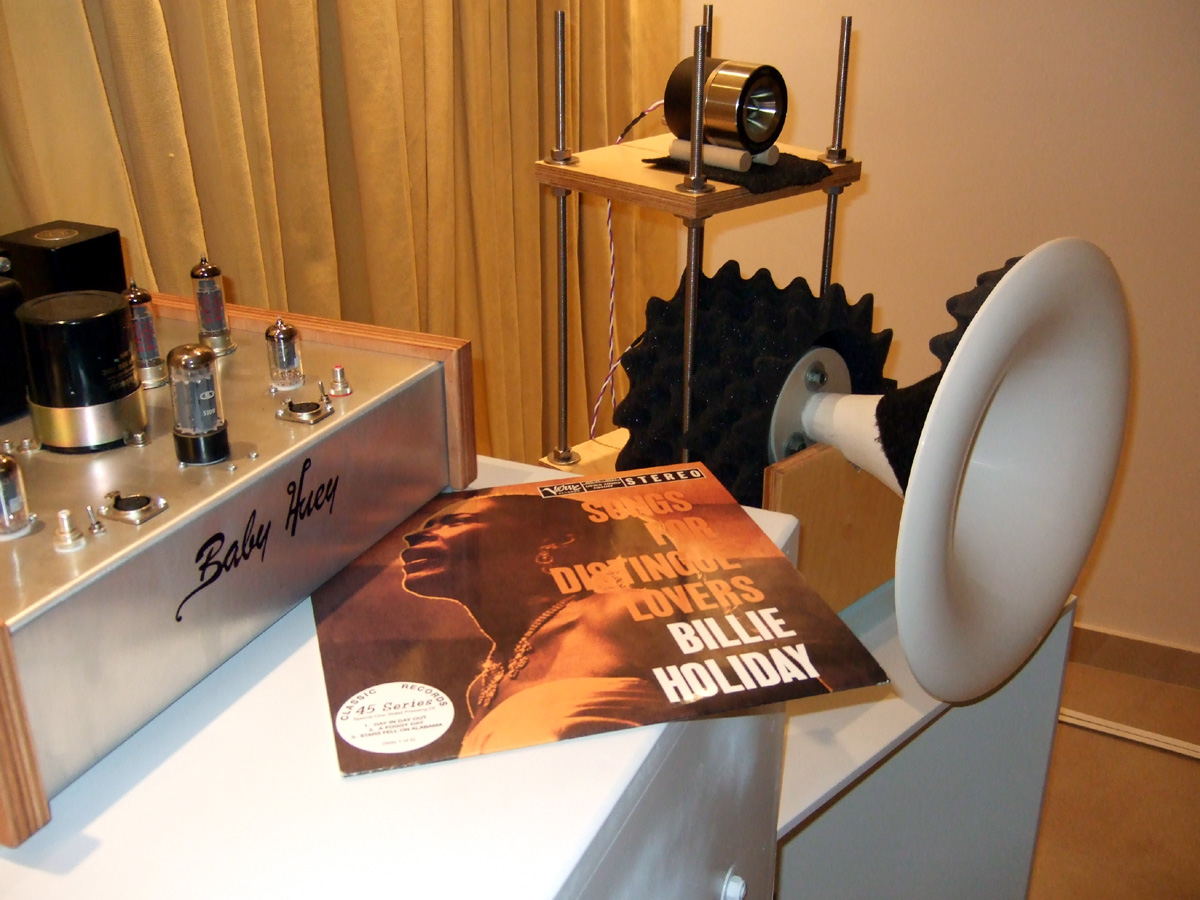
Step3. Alignment of George's scope for vertical and horizontal, checks and evaluation of the new TSSA V1.6 amp. So to decide which amp gave the most resolution and tone for comparing the simplistics to best ability later.
Bias, offset, and 200kHz square wave tests for TSSA V1.6. That amp proved wide, did 2.5MHZ -3dB. Took its place for evaluation in the system.
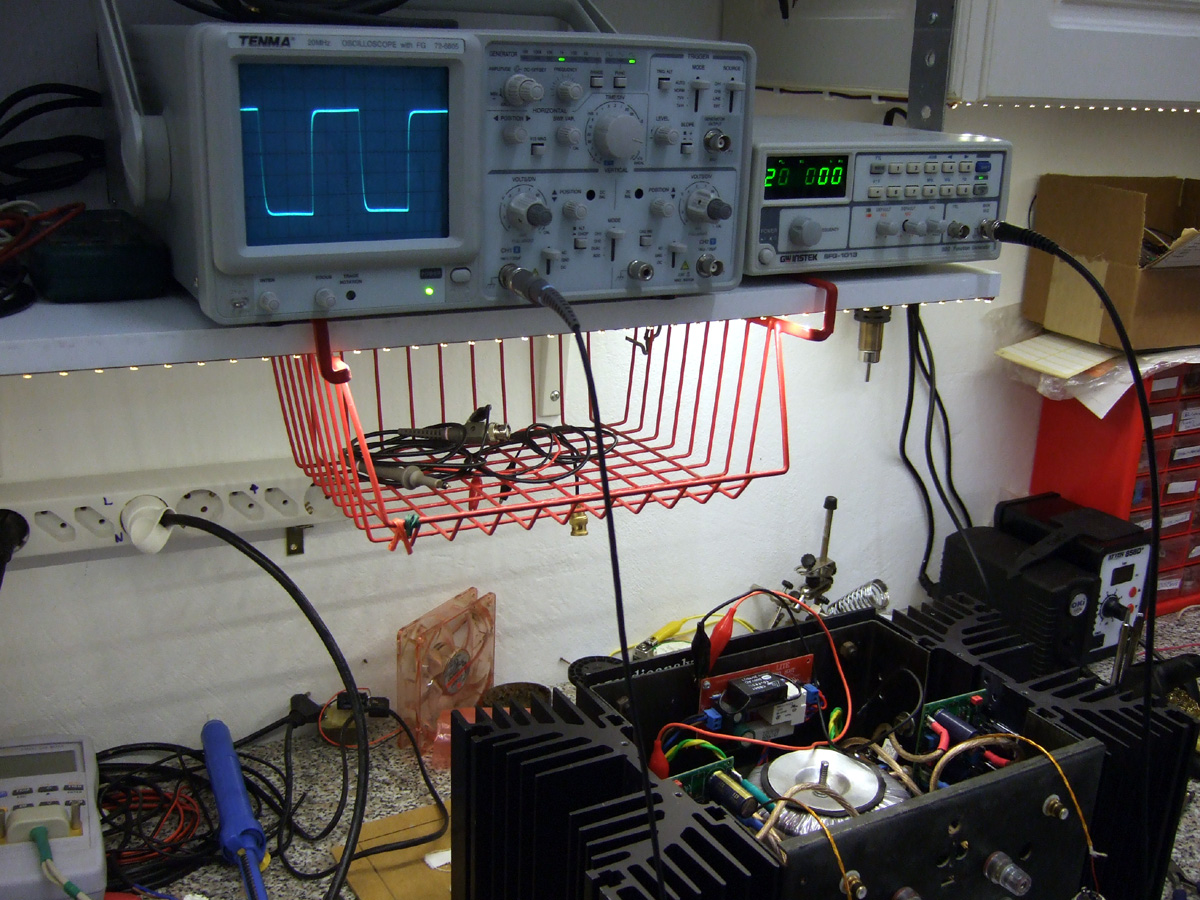
Wow! It gave such a resolution uplift in complete tone smoothness, musicality, and dynamic poise, a gift to our Riaa preamps careful comparison intentions. Much auditioning followed to grasp the new level of subjective parameters till late in the night.
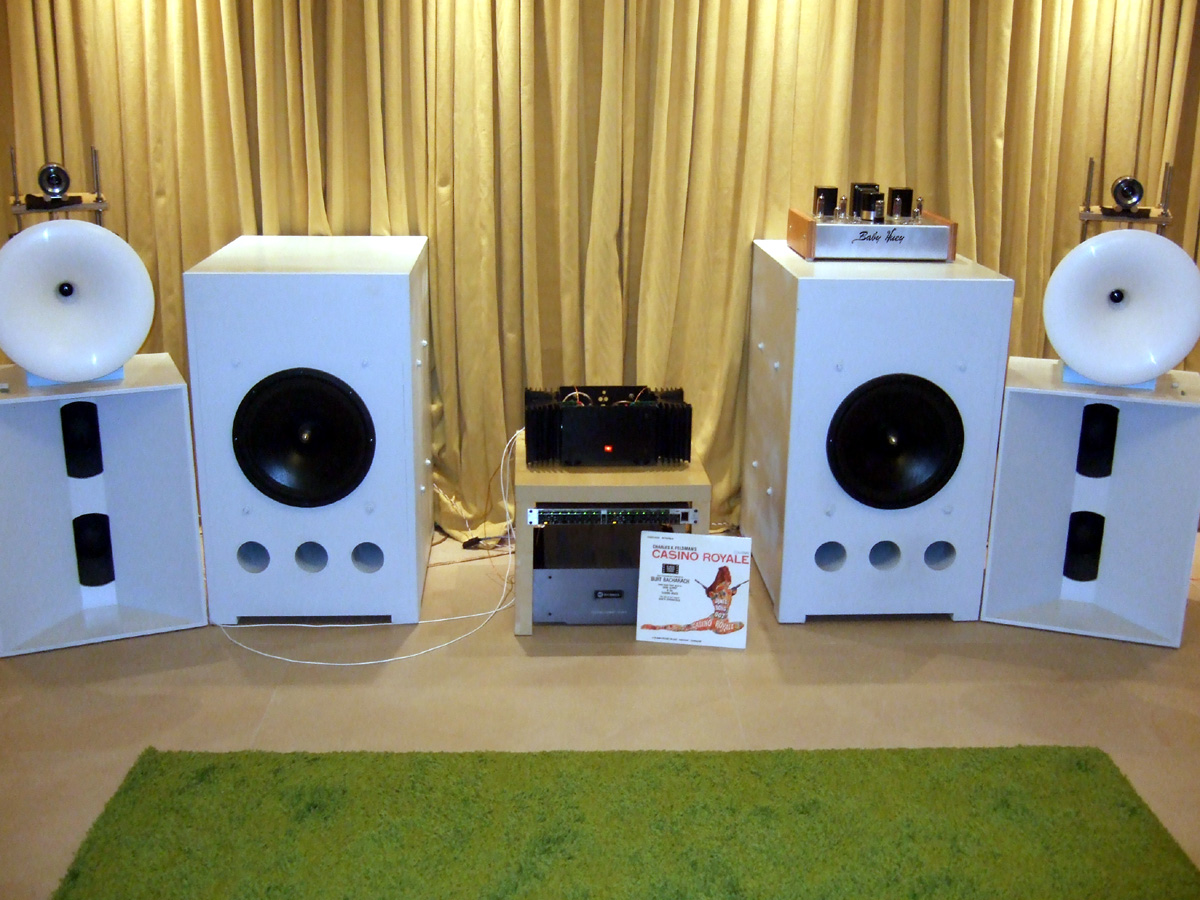
Next day the weather was windier and moodier, a nice day for starting the Folded Simplistic proto build.
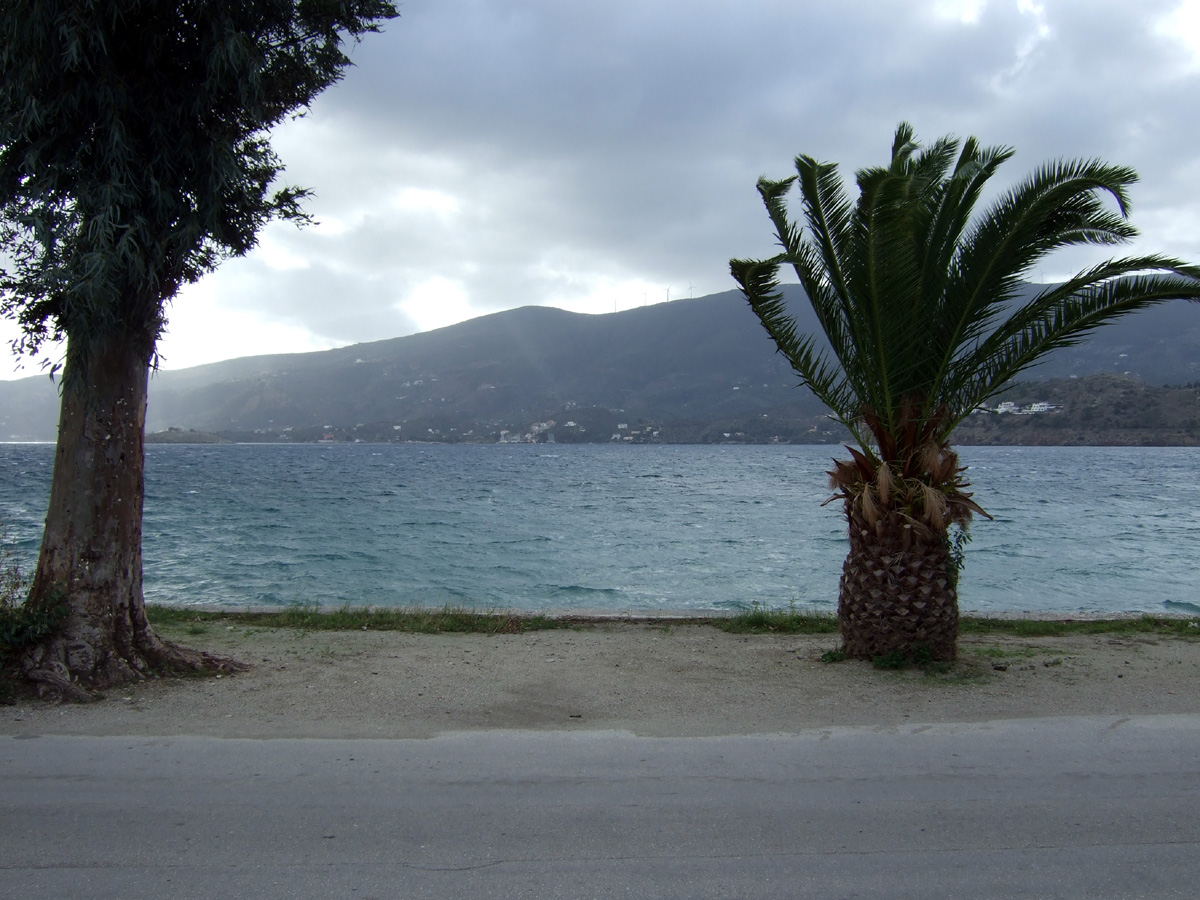
The system was left on and warm all the time, the standard simplistic to be freshly re-listened before any substitution was waiting too.
Step4. We retreated to the small DIY room, radio silence was ordered for ears to relax, until we would be ready with a proto Folded p2p channels pair to evaluate.
We opted for two small boards double mono plan for layout compactness. George had already prepared matched JFETs and passive components, I decided the placements, then the building went on and on in good team work. After 2-3 hours and some connections verification, some DC levels and AC signal checks, voila! 7x5cm proto
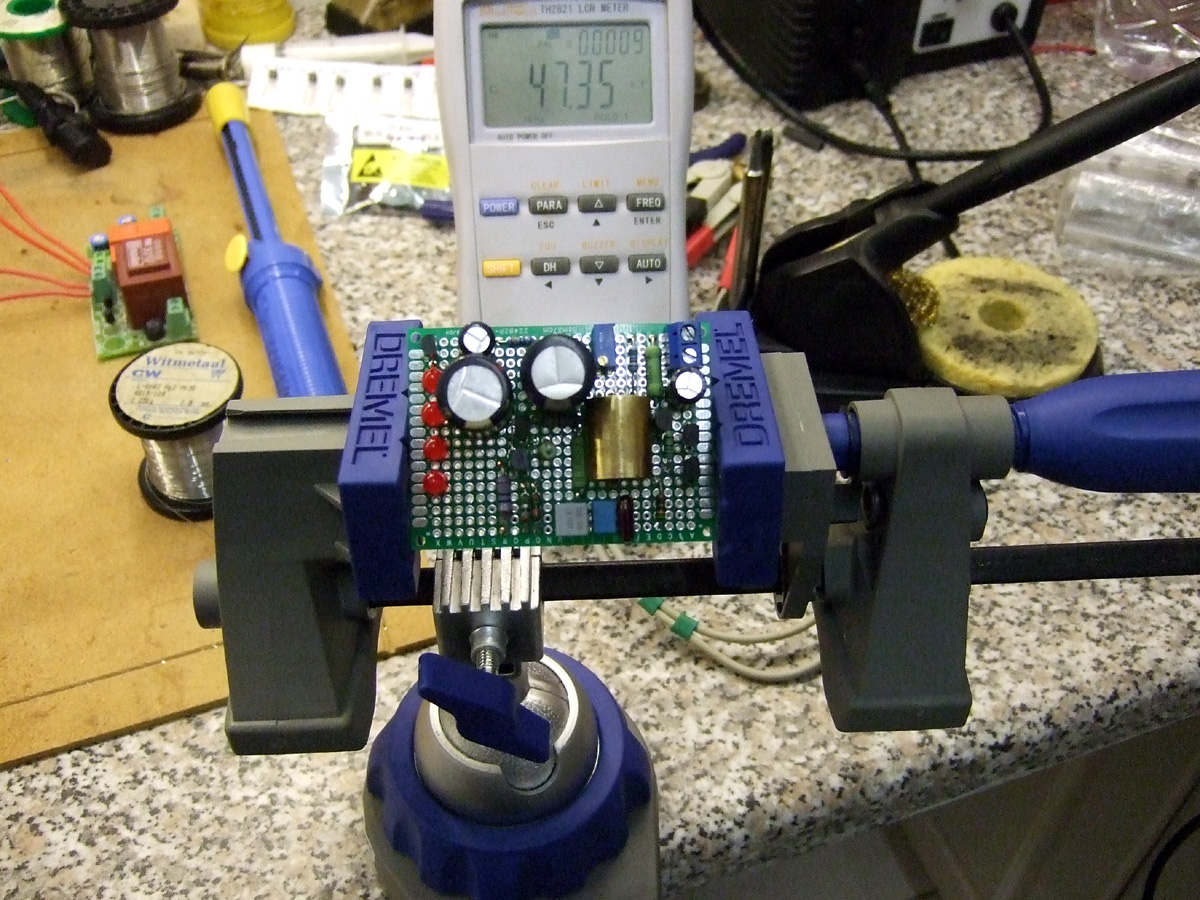
P2P replication for next channel
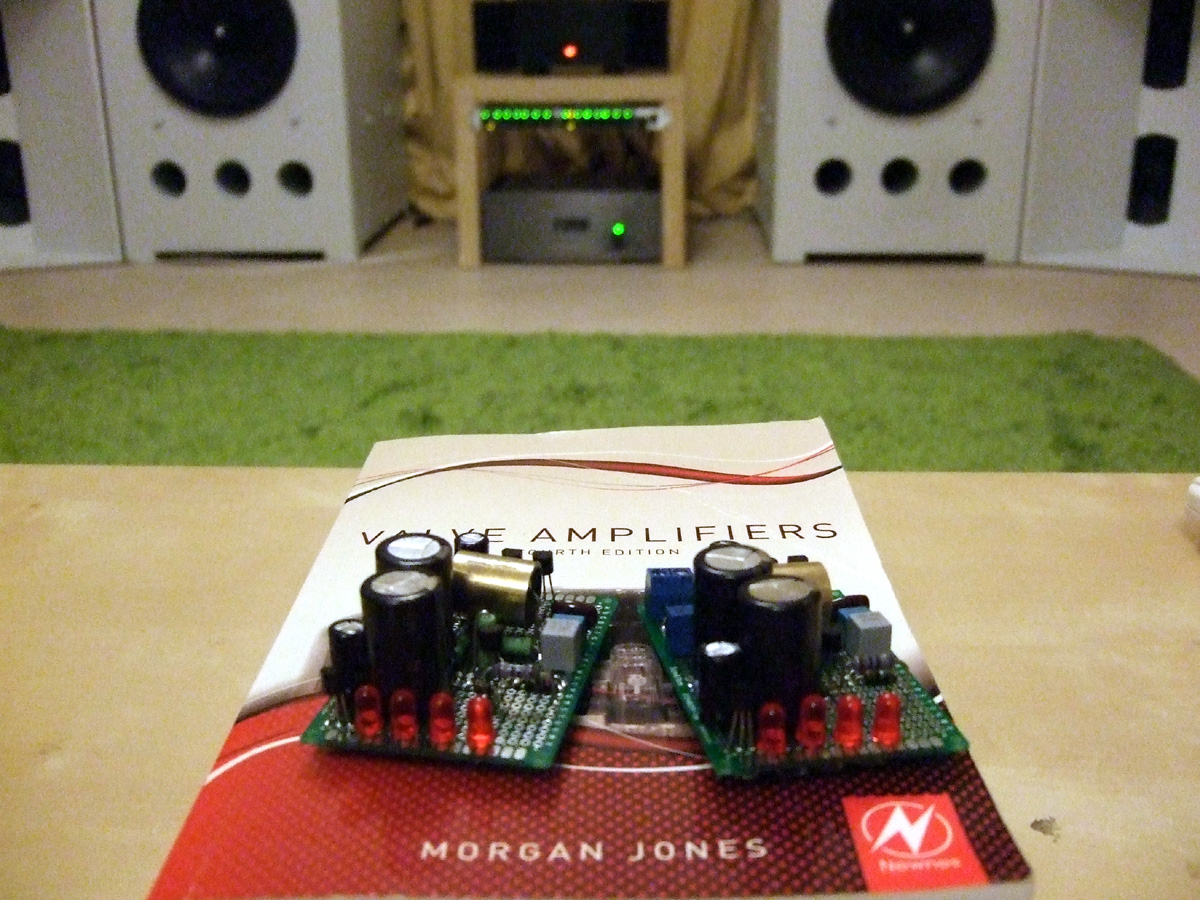
Step5. Fresh listening session with a handful of chosen records on the standard simplistic while the folded boards were waiting for their turn patiently. They wait...
Step6. Housing in the existing phono box so to have the same PSUS and general config. Some step down of the SSLV1.1s Vout to 35VDC, first stage centering of the folded DCV bias.
Installation and initial listening was time to begin.
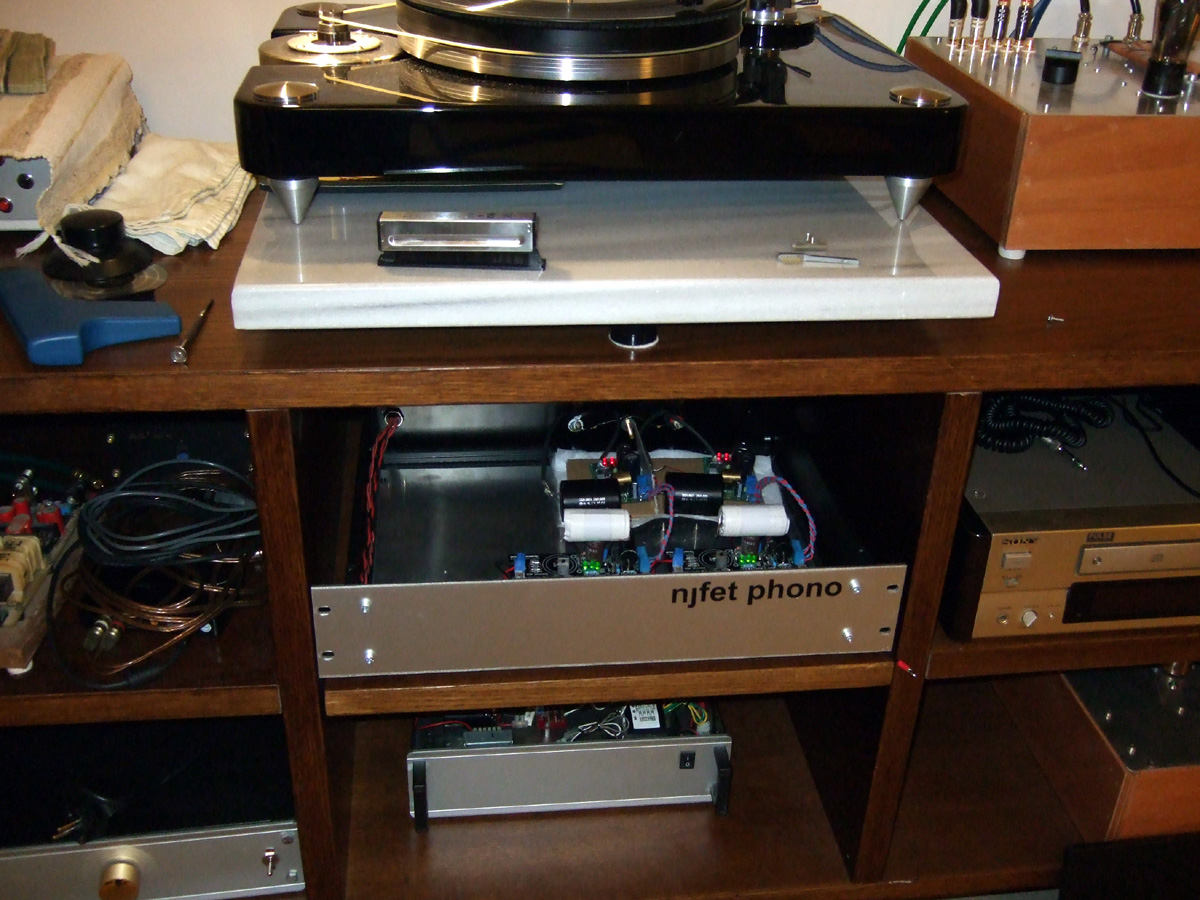
Hey! Something very nice was happening! Instant agreement that we were onto something really good. Background noise went down sharply on the already quiet 100dB+ horn system, no hum or buzz without the lid on even, bass detail and slam came forth, focus & resolution boosted drastically without any loss of the simplistic identity. We listened till 4AM...
We decided to dedicate the next day to more listening with more records, ranging from Norah Jones to full symphonic so we would nail it well. Enough vinyl supply...
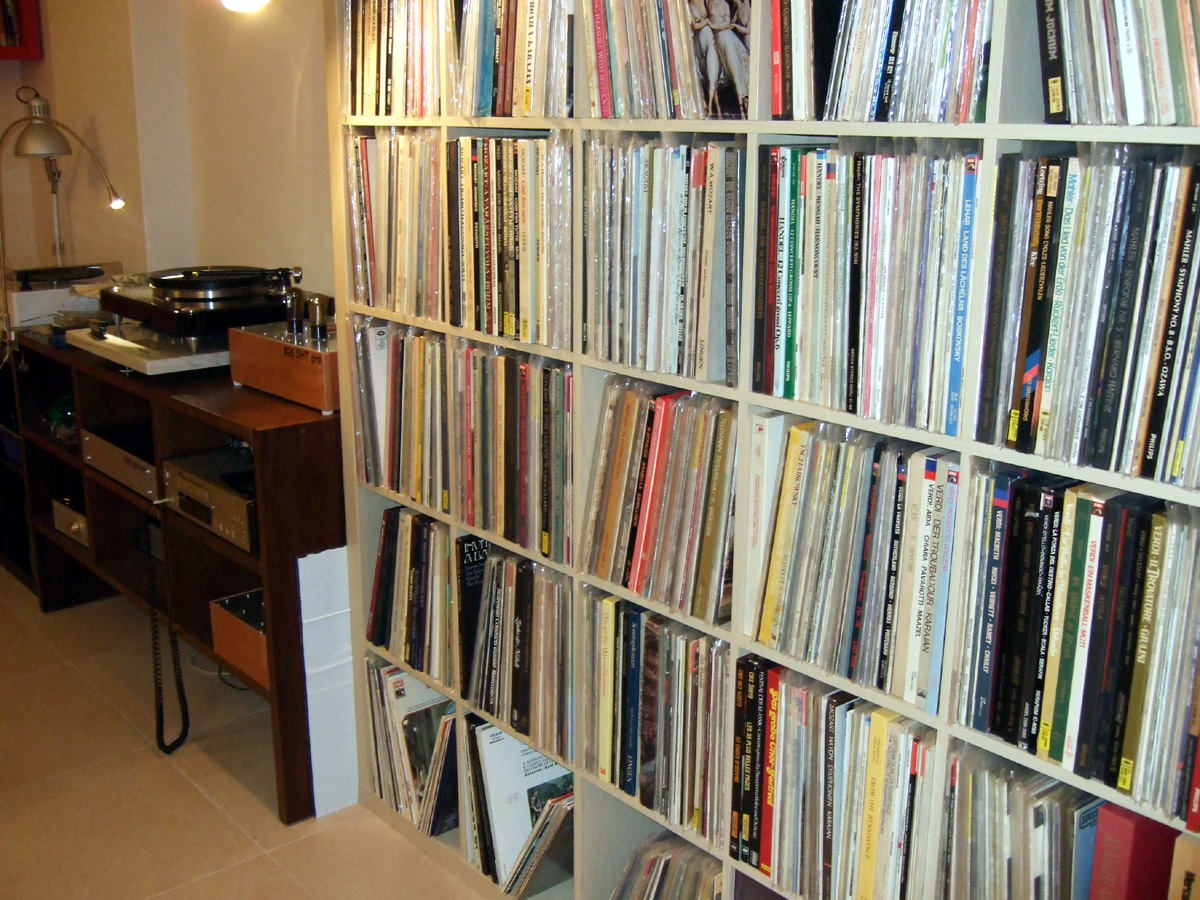
Weather was sunny again, was Saturday morning already. After coffee we started in good spirits, fresh and not tired from building like in the night before.
Confirmation & agreement, disc after disc. It was obvious to the best of our judging ability that we really liked the sucker. Nothing to tweak. Tone was perfect, not a trace of harshness. No Riaa cap value tweaks no output buffer design changes. True, that system was on particularly good amplification and general alignment by now, but it ought to be, that is why we bothered preparing it so much. So to make no false compensation in the Riaa preamp regarding shortcomings in the system. Thus I consider the circuit I include in a small PDF with basic instructions as final, with values that are officially recommended.
Step6. Success cigar was in order.
Step7. Some tour of Poros, good food and departure late in the evening thanking Vgeorge for his great hospitality, gear, hobby fellowship, and input. We will meet again some sunny day.
Poros city harbor view
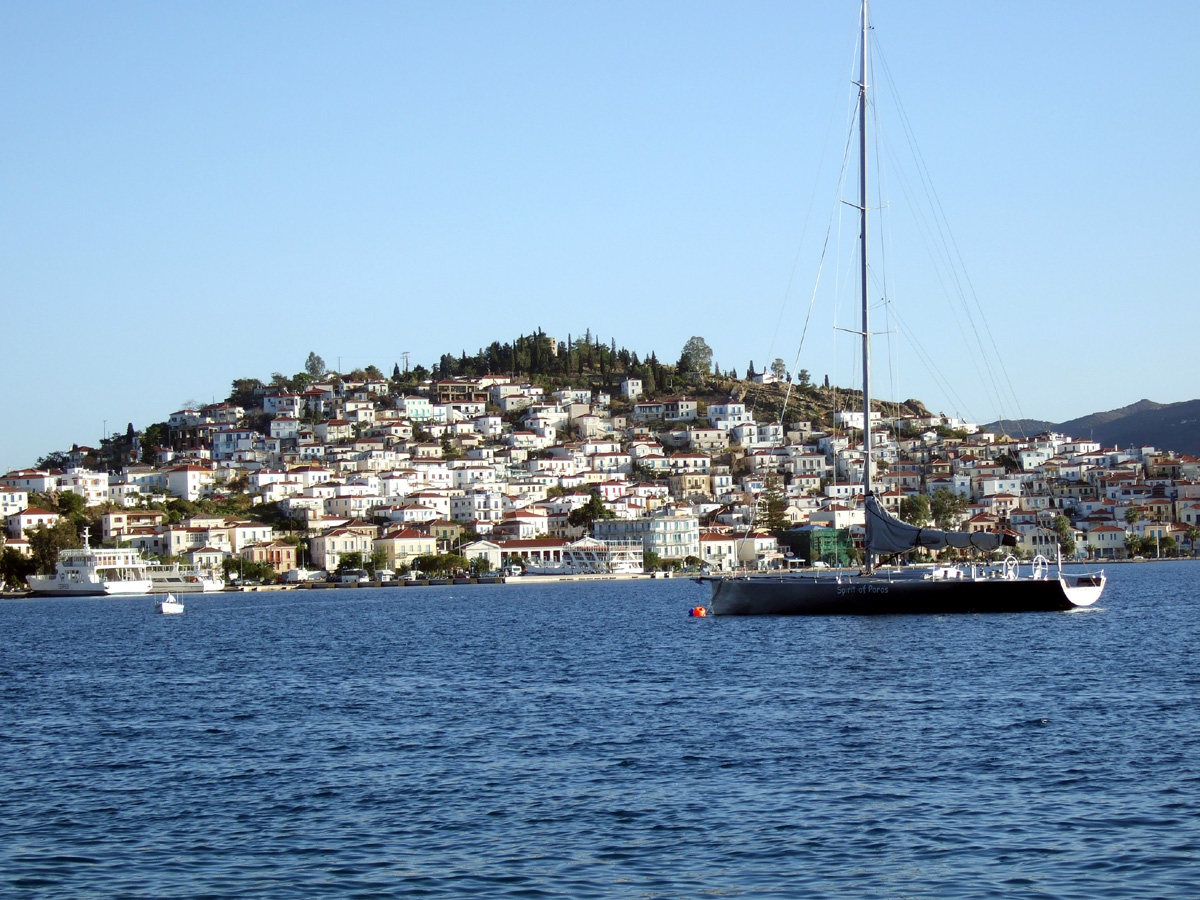
End of report folks! Thanks for reading.
Hi all!
As promised, here is the report of the folded simplistic proto build, evaluation & more.
To make a favorite better and not to detract something is a careful job. And it takes tools to evaluate correctly. Some inspected and able tools. The tool in this case is member's Vgeorge system at near Athens island of Poros where he resides. There was a standard simplistic operating there for comparison, lots of vinyl, a dedicated audio room, and a modular horn loudspeaker system with active subwoofers based on Lynn Olson's Beyond The Ariel thread general norms. Also a Baby Huey EL84 symmetrical amp, plus a newly put together TSSA V1.6 current feedback Mosfet Class A DC coupled symmetrical amp, made from Sito audio PCBs.
Since I had also designed the crossovers for those speakers and had familiarized myself during an older visit, George and I thought it would be a nice test environment to make and subjectively evaluate the Folded Simplistic.
We arrived on Wednesday. We relaxed a bit, then a whole system test, tune, and subjective clues refresh strategy was put into practice.
Step1. Check with my calibrated mic for reference. A ribbon tweeter was used for that.
Step2. After house curve measurements and tweaks to even out the active subwoofers and midbass horns power response in the room to the best of our estimation and agreement, some lengthy sonic familiarization session took place firstly. Baby Huey was doing the drive duties for now.
Step3. Alignment of George's scope for vertical and horizontal, checks and evaluation of the new TSSA V1.6 amp. So to decide which amp gave the most resolution and tone for comparing the simplistics to best ability later.
Bias, offset, and 200kHz square wave tests for TSSA V1.6. That amp proved wide, did 2.5MHZ -3dB. Took its place for evaluation in the system.
Wow! It gave such a resolution uplift in complete tone smoothness, musicality, and dynamic poise, a gift to our Riaa preamps careful comparison intentions. Much auditioning followed to grasp the new level of subjective parameters till late in the night.
Next day the weather was windier and moodier, a nice day for starting the Folded Simplistic proto build.
The system was left on and warm all the time, the standard simplistic to be freshly re-listened before any substitution was waiting too.
Step4. We retreated to the small DIY room, radio silence was ordered for ears to relax, until we would be ready with a proto Folded p2p channels pair to evaluate.
We opted for two small boards double mono plan for layout compactness. George had already prepared matched JFETs and passive components, I decided the placements, then the building went on and on in good team work. After 2-3 hours and some connections verification, some DC levels and AC signal checks, voila! 7x5cm proto
P2P replication for next channel
Step5. Fresh listening session with a handful of chosen records on the standard simplistic while the folded boards were waiting for their turn patiently. They wait...
Step6. Housing in the existing phono box so to have the same PSUS and general config. Some step down of the SSLV1.1s Vout to 35VDC, first stage centering of the folded DCV bias.
Installation and initial listening was time to begin.
Hey! Something very nice was happening! Instant agreement that we were onto something really good. Background noise went down sharply on the already quiet 100dB+ horn system, no hum or buzz without the lid on even, bass detail and slam came forth, focus & resolution boosted drastically without any loss of the simplistic identity. We listened till 4AM...
We decided to dedicate the next day to more listening with more records, ranging from Norah Jones to full symphonic so we would nail it well. Enough vinyl supply...
Weather was sunny again, was Saturday morning already. After coffee we started in good spirits, fresh and not tired from building like in the night before.
Confirmation & agreement, disc after disc. It was obvious to the best of our judging ability that we really liked the sucker. Nothing to tweak. Tone was perfect, not a trace of harshness. No Riaa cap value tweaks no output buffer design changes. True, that system was on particularly good amplification and general alignment by now, but it ought to be, that is why we bothered preparing it so much. So to make no false compensation in the Riaa preamp regarding shortcomings in the system. Thus I consider the circuit I include in a small PDF with basic instructions as final, with values that are officially recommended.
Step6. Success cigar was in order.
Step7. Some tour of Poros, good food and departure late in the evening thanking Vgeorge for his great hospitality, gear, hobby fellowship, and input. We will meet again some sunny day.
Poros city harbor view
End of report folks! Thanks for reading.

Attachments
-
FoldedSimplisticDoc.pdf309.4 KB · Views: 980
-
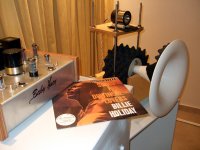 SPKRSchecked.jpg321.4 KB · Views: 1,266
SPKRSchecked.jpg321.4 KB · Views: 1,266 -
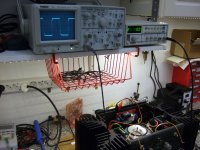 TSSA200KHZSQR.jpg427 KB · Views: 1,248
TSSA200KHZSQR.jpg427 KB · Views: 1,248 -
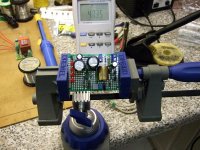 FoldedProto2.jpg462.6 KB · Views: 1,214
FoldedProto2.jpg462.6 KB · Views: 1,214 -
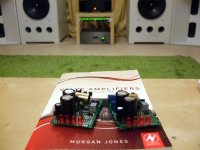 FoldedProtosWaiting.jpg437.4 KB · Views: 1,211
FoldedProtosWaiting.jpg437.4 KB · Views: 1,211 -
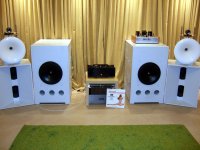 SPKRS&TSSA.jpg366.3 KB · Views: 1,220
SPKRS&TSSA.jpg366.3 KB · Views: 1,220 -
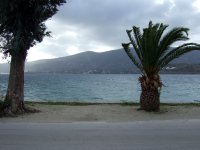 AskeliWindy1.jpg368.4 KB · Views: 1,277
AskeliWindy1.jpg368.4 KB · Views: 1,277 -
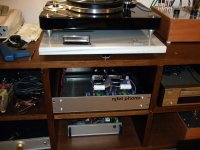 FoldedProtosInstalled.jpg361.7 KB · Views: 1,282
FoldedProtosInstalled.jpg361.7 KB · Views: 1,282 -
 Poros1Sunny.jpg439.1 KB · Views: 1,210
Poros1Sunny.jpg439.1 KB · Views: 1,210 -
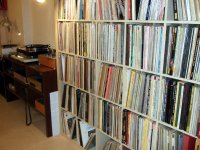 LOTSAVINYL.jpg505.3 KB · Views: 1,296
LOTSAVINYL.jpg505.3 KB · Views: 1,296
Splendid "reportage" Salas
"Hey! Something very nice was happening! Instant agreement that we were onto something really good. Background noise went down sharply on the already quiet 100dB+ horn system, not a trace of hum without the lid on even, bass detail and slam came forth, focus & resolution boosted drastically without any loss of the simplistic identity. We listened till 4AM..."
Now you know what I have here
I only count three transistors in the second stage... so you dropped second stage cascode right ?
Did you try the "old style" k170 loner buffer ? Or you liked the k170 ccs in the buffer ?
PS:
JG is cooking the TS... we need your help there also
"Hey! Something very nice was happening! Instant agreement that we were onto something really good. Background noise went down sharply on the already quiet 100dB+ horn system, not a trace of hum without the lid on even, bass detail and slam came forth, focus & resolution boosted drastically without any loss of the simplistic identity. We listened till 4AM..."
Now you know what I have here
I only count three transistors in the second stage... so you dropped second stage cascode right ?
Did you try the "old style" k170 loner buffer ? Or you liked the k170 ccs in the buffer ?
PS:
JG is cooking the TS... we need your help there also
Last edited:
I dropped the second stage cascode to keep same tone to the old was an earlier decision anyway as you know, but the "new" buffer remains. No hyper detail, only power. Granted this is the 2SK369 input original proposition and the system was smooth as butter and resolute as a starry night. In other systems or with K170s input stage your mileage may vary, but based on what we heard in Poros this one we tested goes down official. I put much thought in ways of evolution to arrive to the principle of what you have there, your early adoption and faith to put time and work into it is appreciated. Still I had to do final thorough own subjective test of course. You know I avoid to recommend anything before I fully verify and tune down to my own ears. Your early impressions proved in line nonetheless. Enjoy.
PS:
JG is cooking the TS... we need your help there also
I can't possibly give useful input to stuff I don't originally picture as my circuit ideas and don't listen to as it develops. I am honored JG would give a go to the general simplistic concept but that would be something else, good to his circuit ideas and ears. Not a Salas simplistic. I don't prefer transimpedance circuitry for vinyl replay in general anyway. Best of luck in research.
Cool, i am jealous.
On the MPP thread i try to design a Transimpedance Simplistic ( TC ) right now.
The mythical story goes on !
Wishing for best outcome to your preferences JG.

Just keep those junctions count low.
Thanks, i do not claim that it is superior but i like the general idea to make it as simple as possible.
I even can not tell if it works correct. It just came out of my mind without asking to be born and without your Simplistic it would not exist. In that sense you inspired me.
I even can not tell if it works correct. It just came out of my mind without asking to be born and without your Simplistic it would not exist. In that sense you inspired me.
Thanks, i do not claim that it is superior but i like the general idea to make it as simple as possible.
I even can not tell if it works correct. It just came out of my mind without asking to be born and without your Simplistic it would not exist. In that sense you inspired me.
Honored as I said. Simple can be disproportionally rewarding some times, epecially with non exact but lovely old analog tech as vinyl is.
Reminded me a lot the SSAs we already know, those early Mosfet two stage ones we tried out, it does not lose the soft and resolute tonality fingerprint. Behaved DC steady though. A finished amp. Now how much more complete in sonic details is to the others, I will have to finish my own Sonny TSSA too and take it near to my friend's installed SSA for A/B. My SSA P2P is in bits due to be overhauled to what we did after Shaan's input. TSSA 1.6 It surely is a great amp. No wrong to go for it if the power and damping is enough to a system.
First a big thanks to Salas for the nice time we had for a few days. Not only for the hifi part, but also for the endless conversations and the good company.
Salas report is so complete, that there are not many things to add.
Just some things to emphasize. First, the new version of the phono, apart from the better sound, is a LOT quieter than the previous one. No ham or interference detected, even with the lid off. Also a tight layout is very important for phono, maybe more than boutique but bigger parts sometimes.
Also Sonny' s TSSA is an excellent amp, too good to be true. If your speakers are suitable, you would be fool not to go for it, even if you prefer tubes.
Salas report is so complete, that there are not many things to add.
Just some things to emphasize. First, the new version of the phono, apart from the better sound, is a LOT quieter than the previous one. No ham or interference detected, even with the lid off. Also a tight layout is very important for phono, maybe more than boutique but bigger parts sometimes.
Also Sonny' s TSSA is an excellent amp, too good to be true. If your speakers are suitable, you would be fool not to go for it, even if you prefer tubes.
Hi George
What do you have there, on your #26 line-amp between the valves ?
Are they some kind of variable resistor ?
( am I nuts ? )
Cheers
Si.
You mean for volume control? I use an Intact Audio AVC. Maybe you mean the big 100W resistor? It is used as cathode resistor for filament bias. Check the #26 thread for more details.
- Home
- Source & Line
- Analogue Source
- Simplistic NJFET RIAA